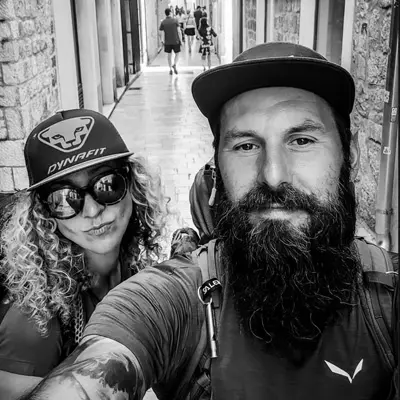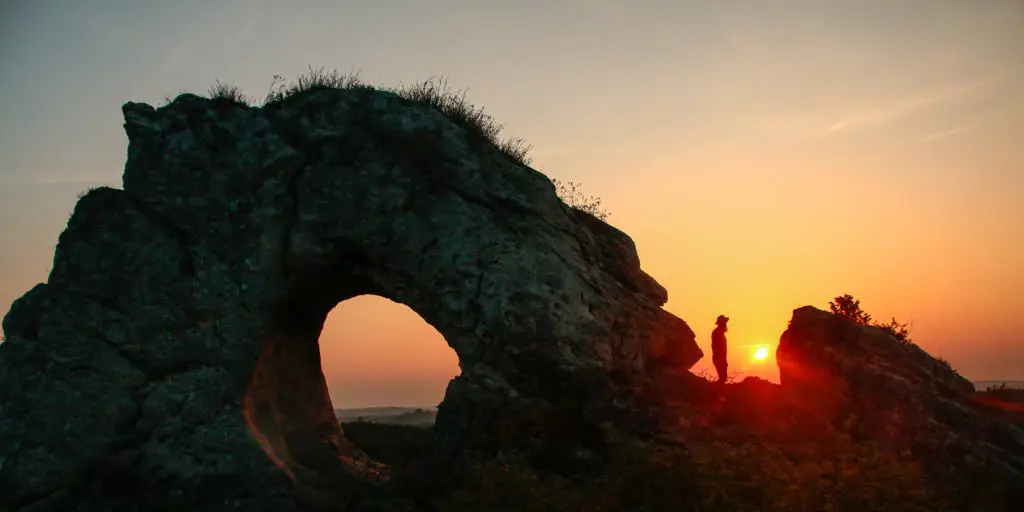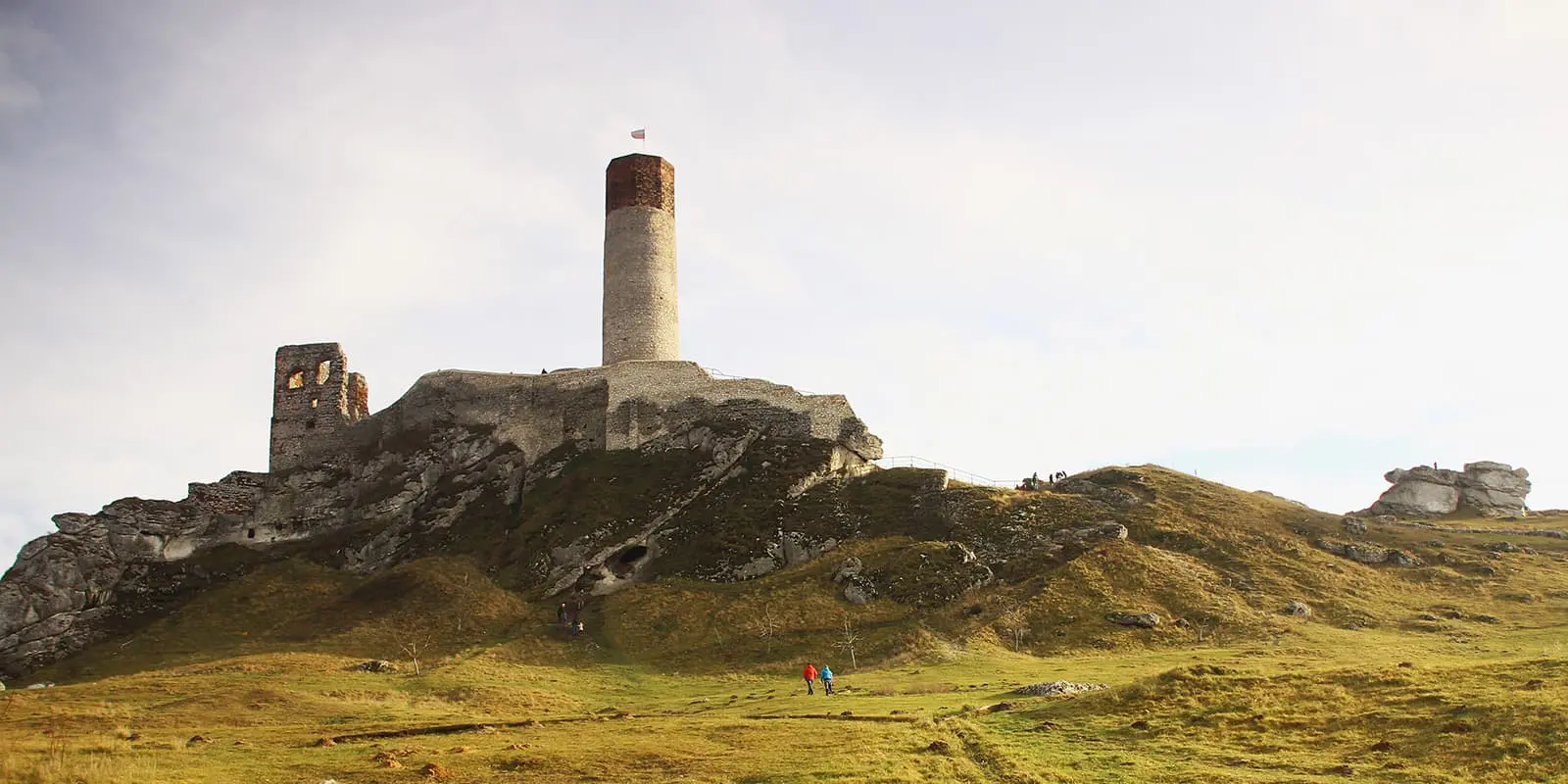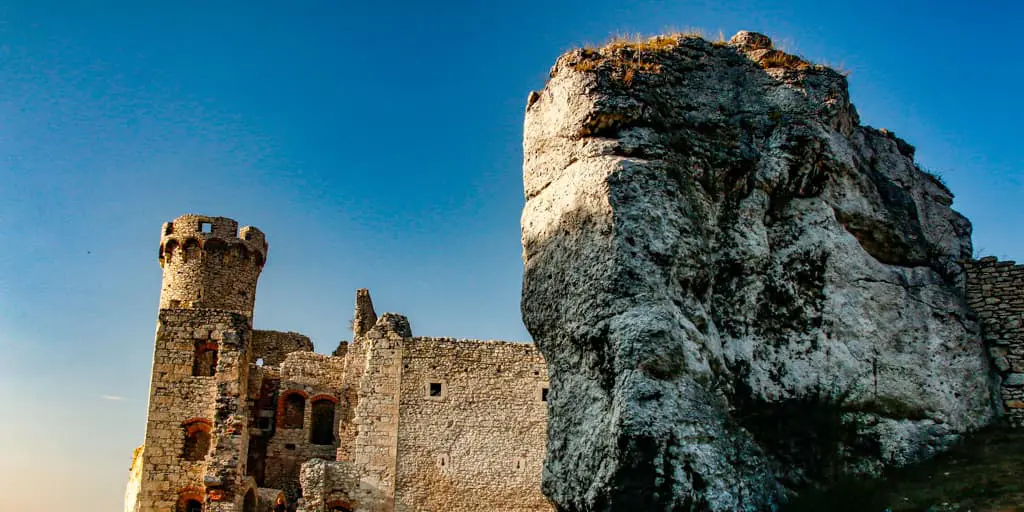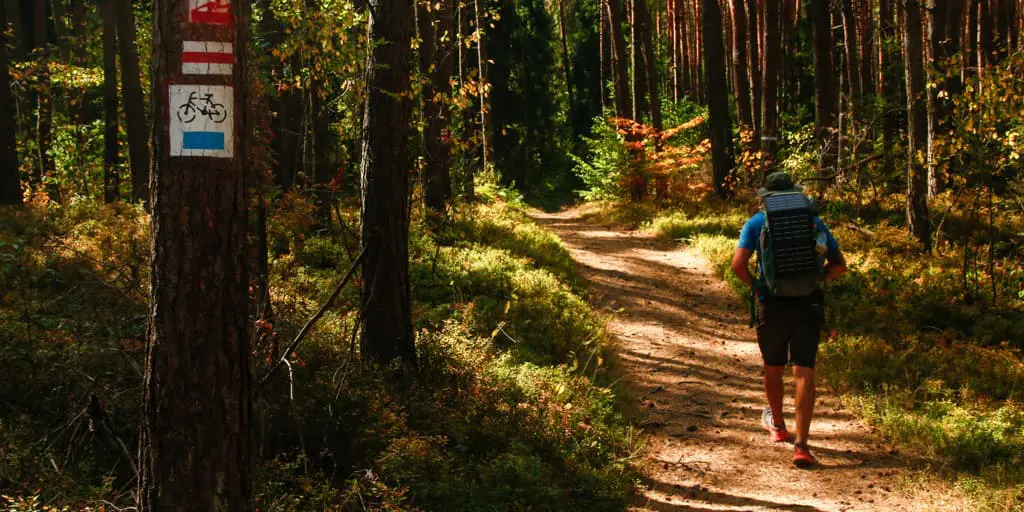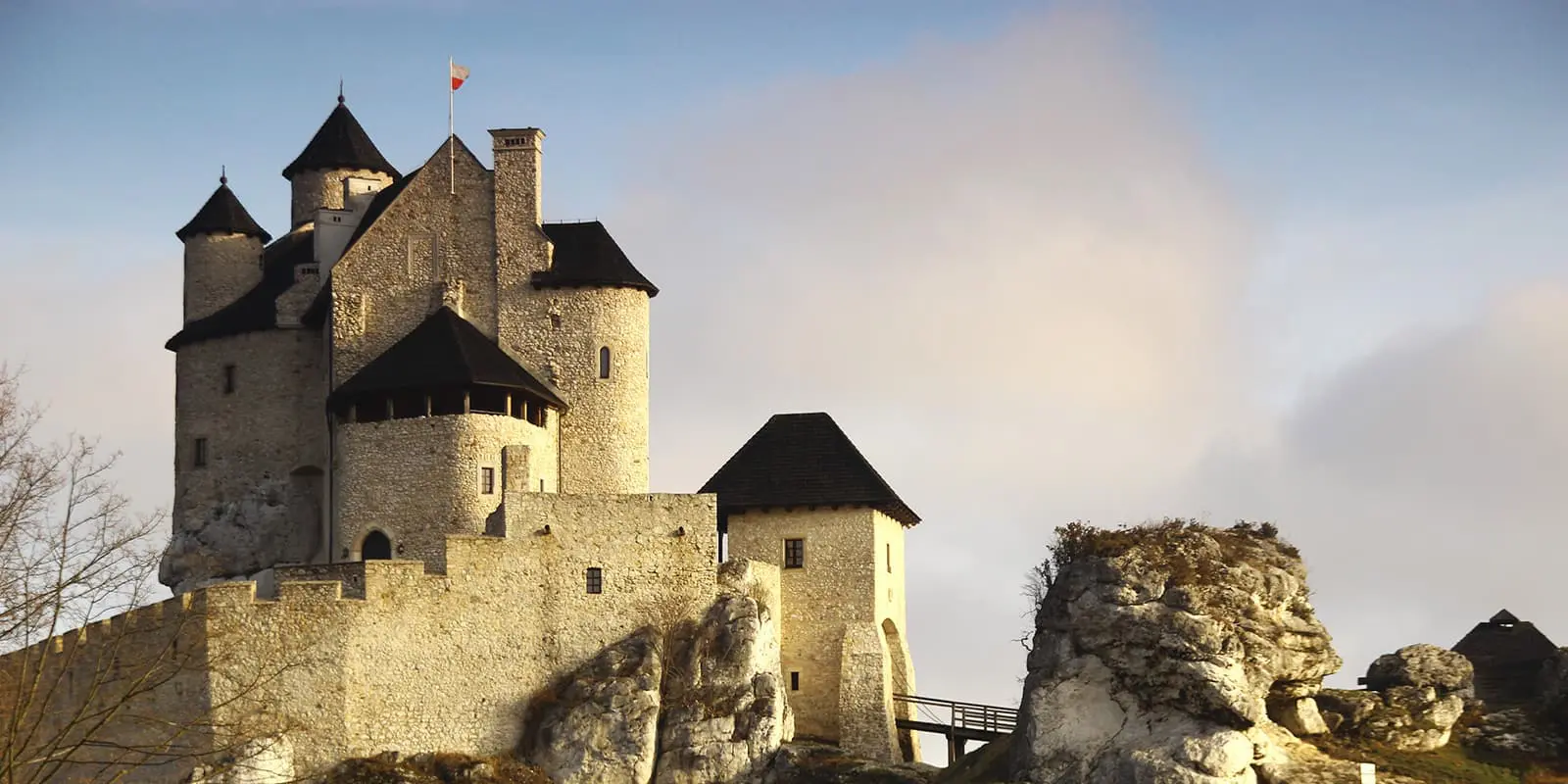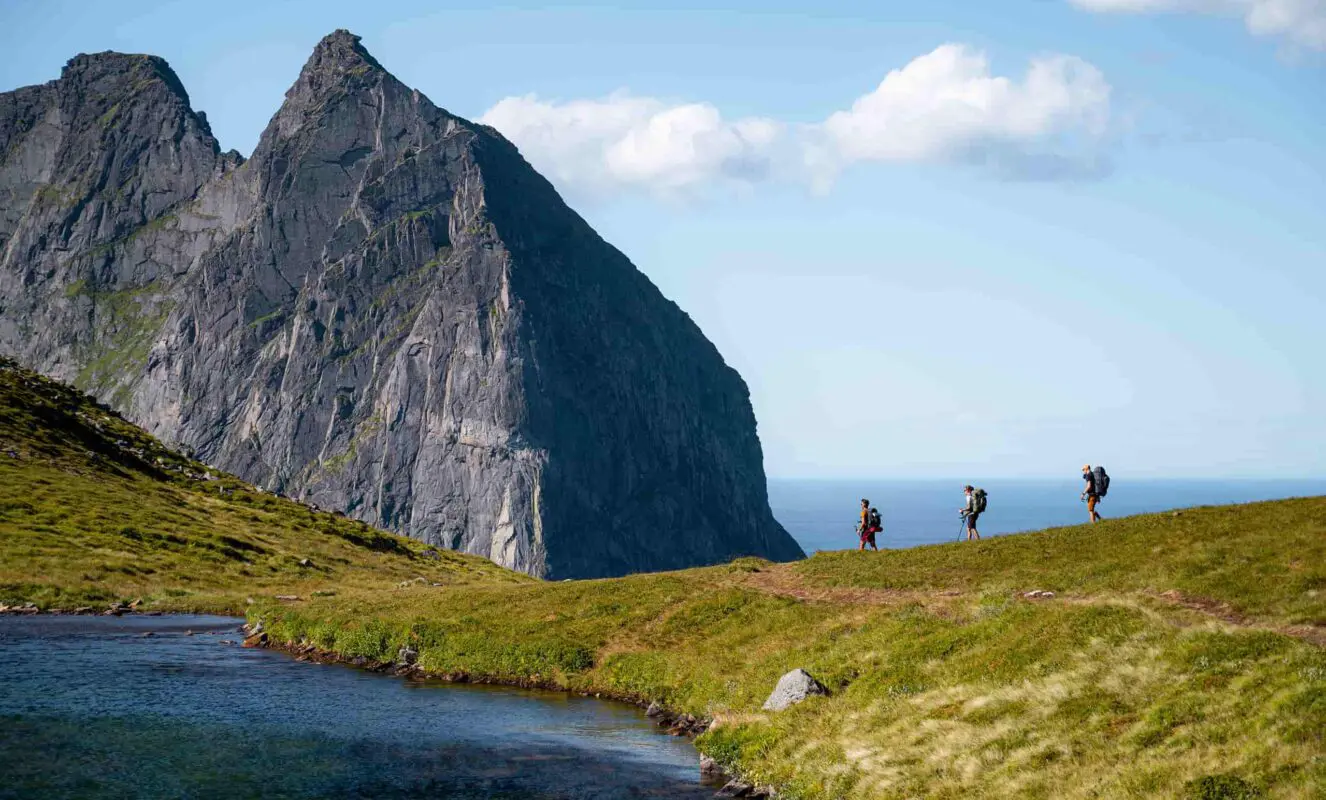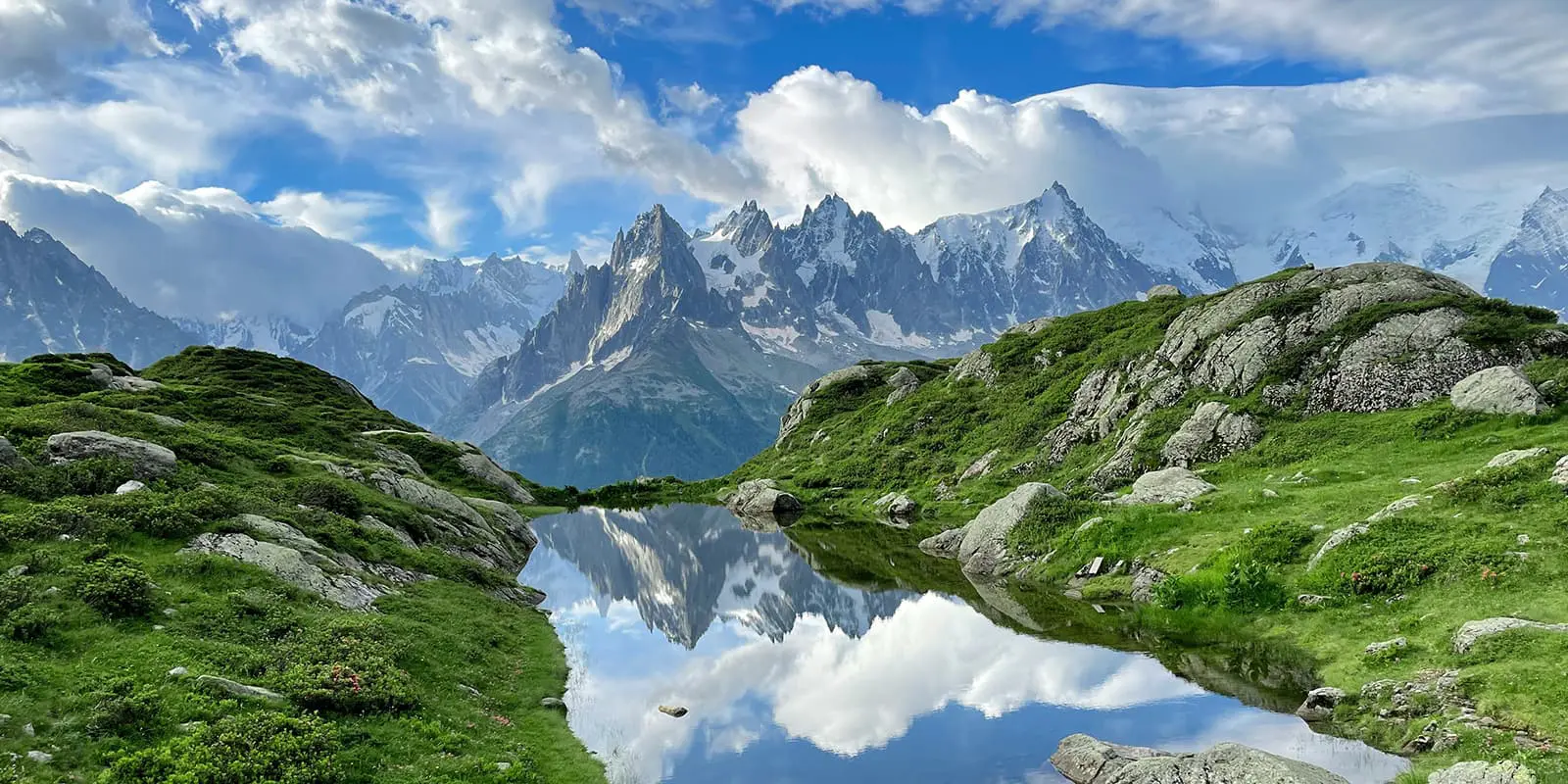On stage two, you will reach the third castle on the route – Rabsztyn, which was renovated a few years ago. The route on this day leads mainly through forests, countryside, and on dirt paths. There are a few stores on the way in Rabsztyn and in Bydlin.
Stage three is one of the most interesting, as you will get to the largest of the eagle nests – Ogrodzieniec Castle. Also, you will see Góra Zborów, which is a beautiful site and there is a possibility to wild camp here if you desire. The views from the area are very beautiful and there are a couple of rock formations used by climbers. The highlight of this stage is Okiennik Wielki, a beautiful rock formation with a window inside that you can climb and explore. Note that it is not visible from the trail but it is just 50m from the path, so it’s worth taking a small reroute and a break.
You’ll find that the fourth stage is also very interesting as you will see two twin castles built in a beautiful Jurassic landscape – Bobolice and Mirów. Both castles were renovated and there is an admission fee. Around the area, there are a couple of shops, restaurants, a hotel, and food trucks where you can try Polish fast food like“zapiekanki.” In the evening, you will get to Złoty Potok, a little town that is famous for trout breeding, so if you want there is a chance to try traditional fish dishes.
The final day is as difficult as the first day because it ends in the city, which means – a lot of asphalt surface. But before you get there, on your way there is a highlight, Olsztyn Castle, which is the second biggest after Ogrodzieniec, but less crowded.




